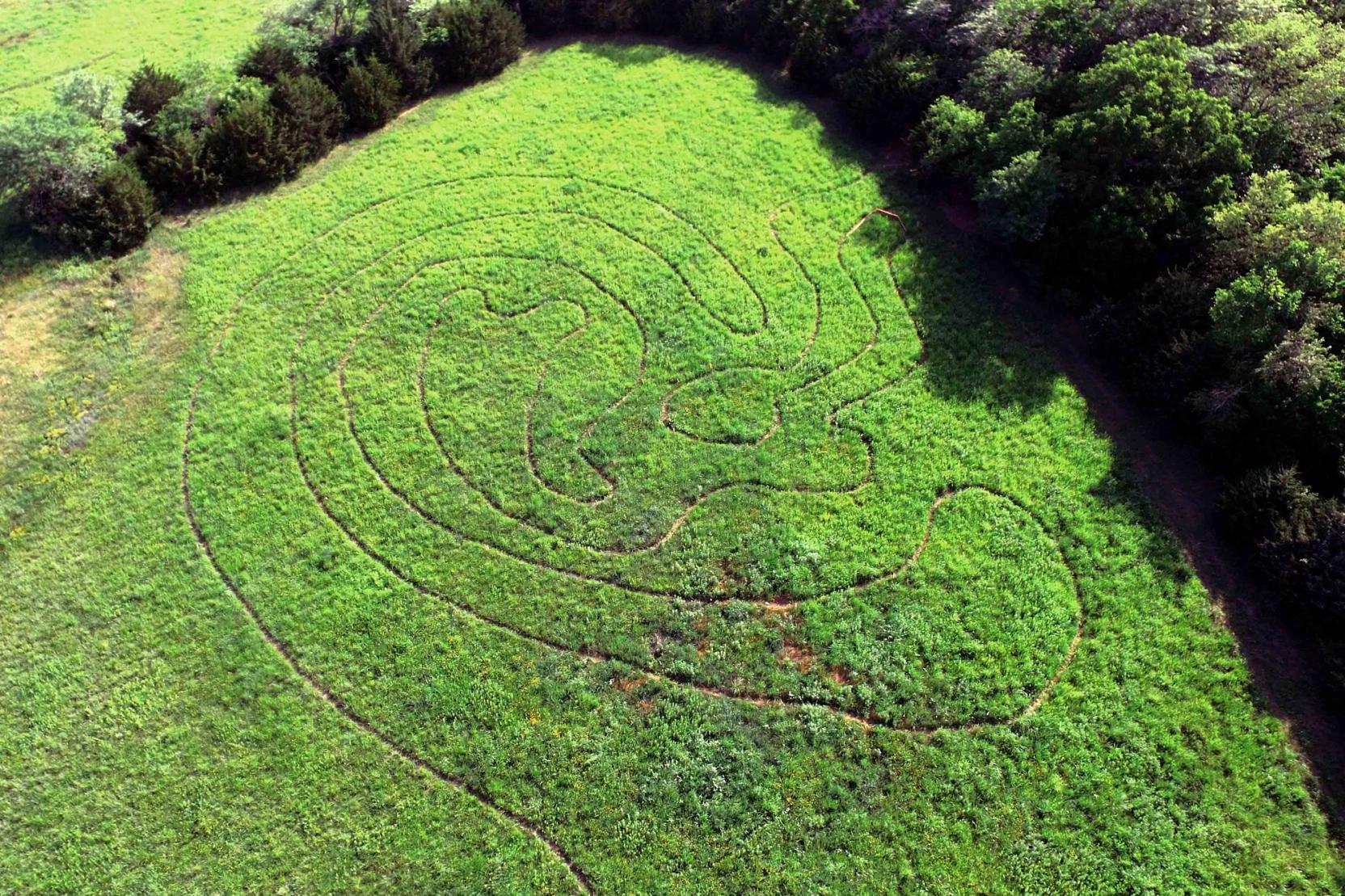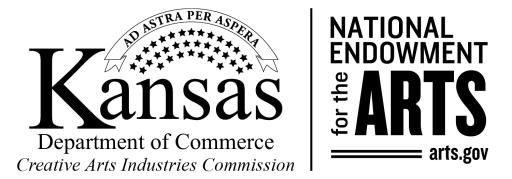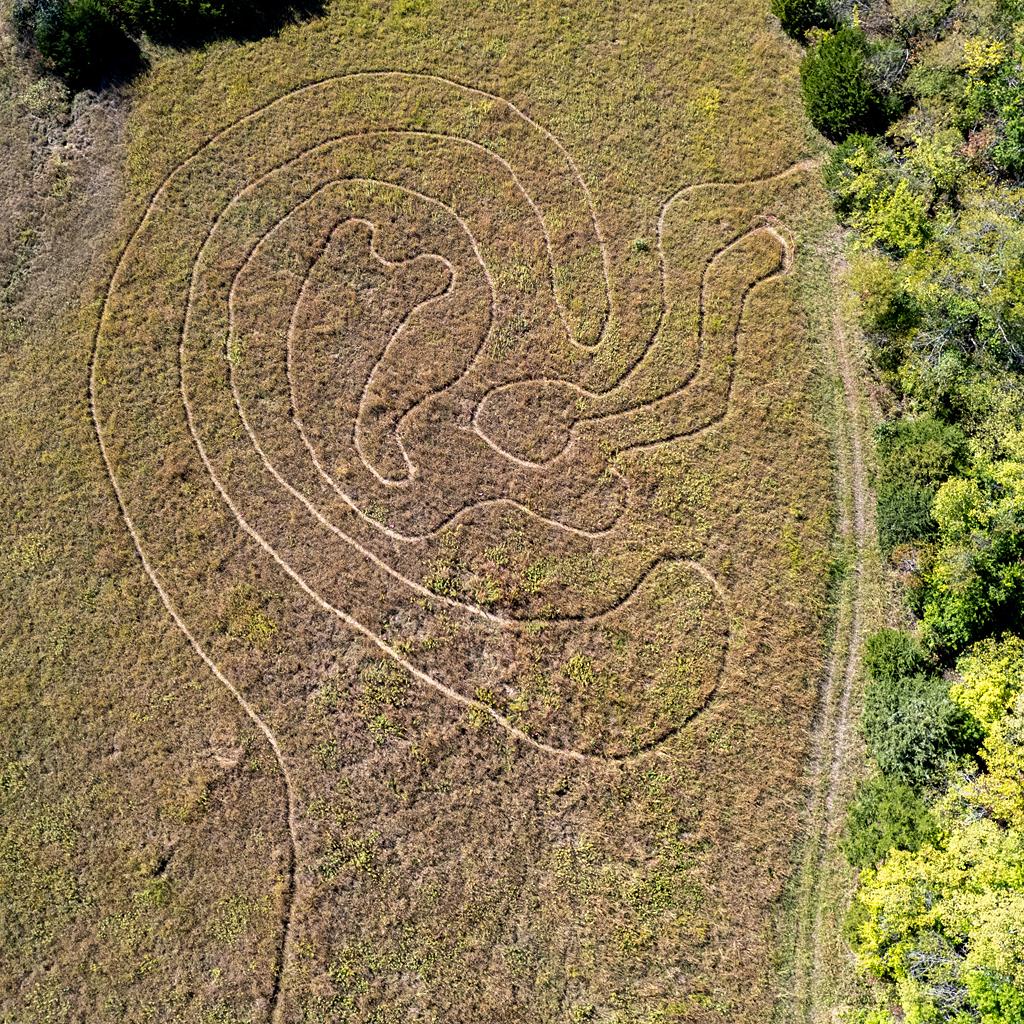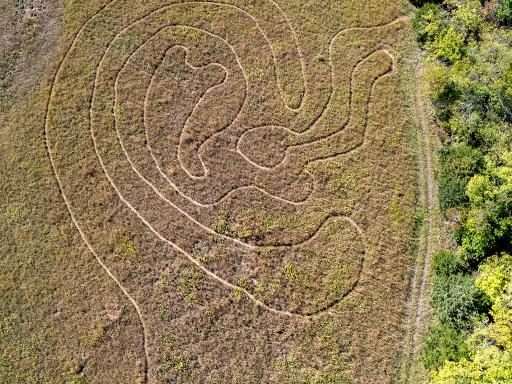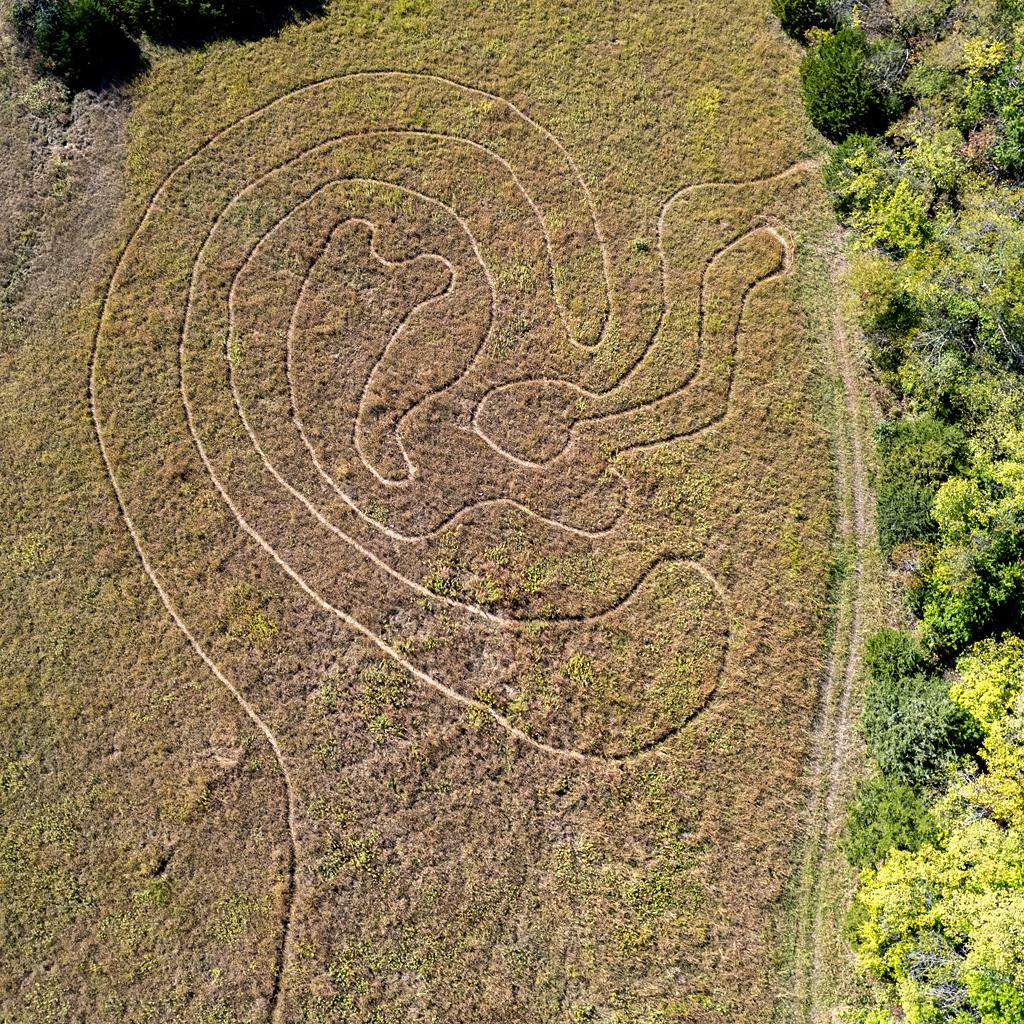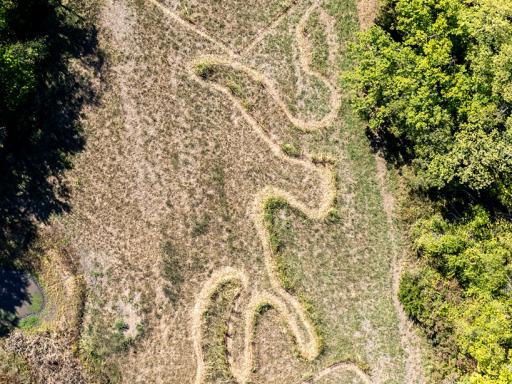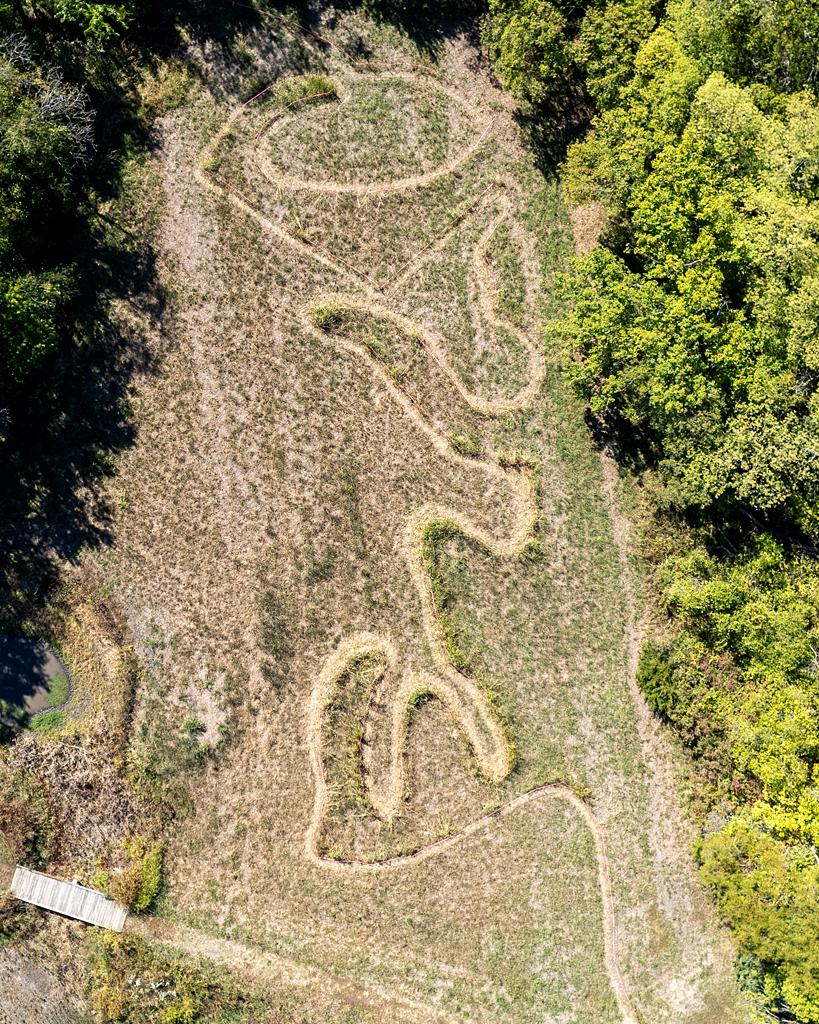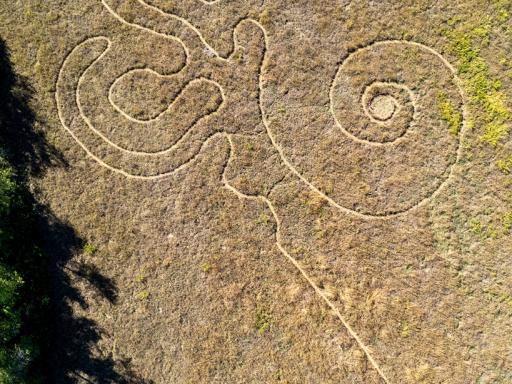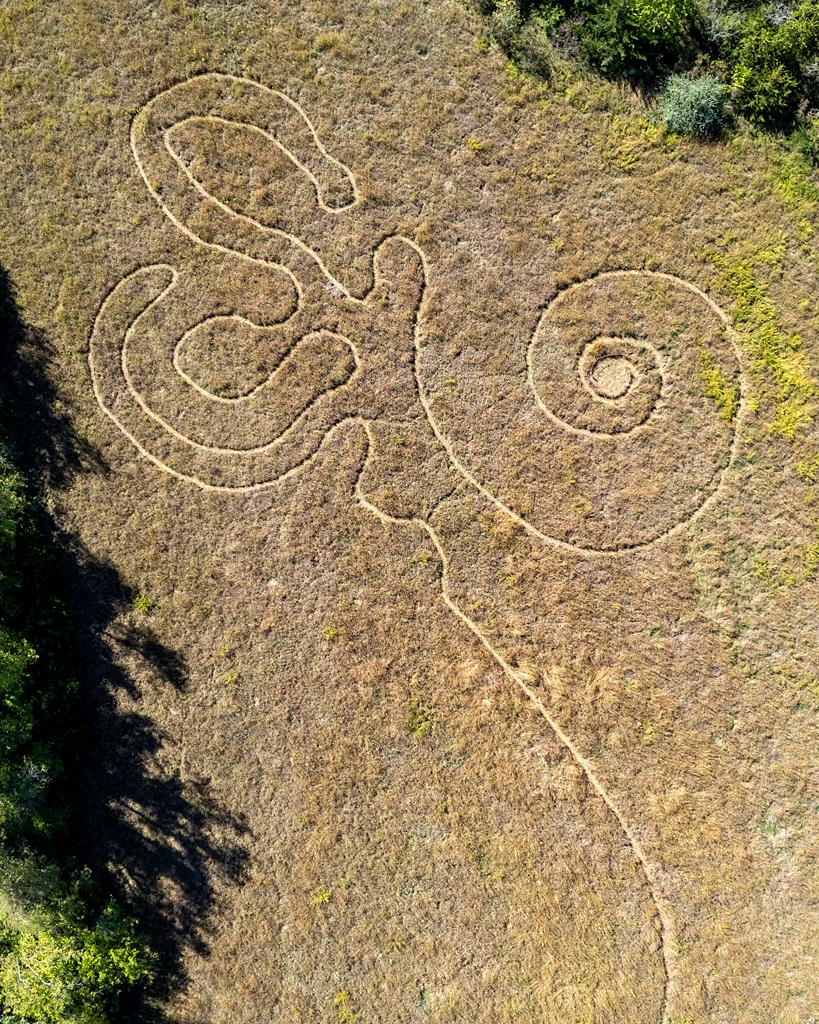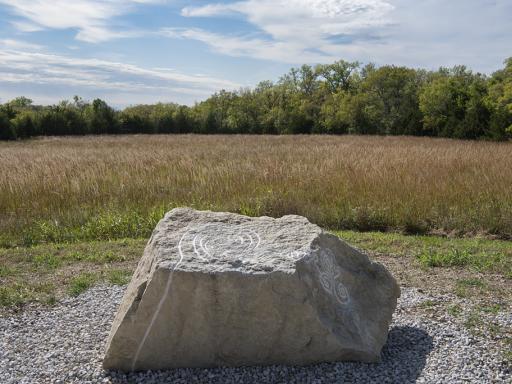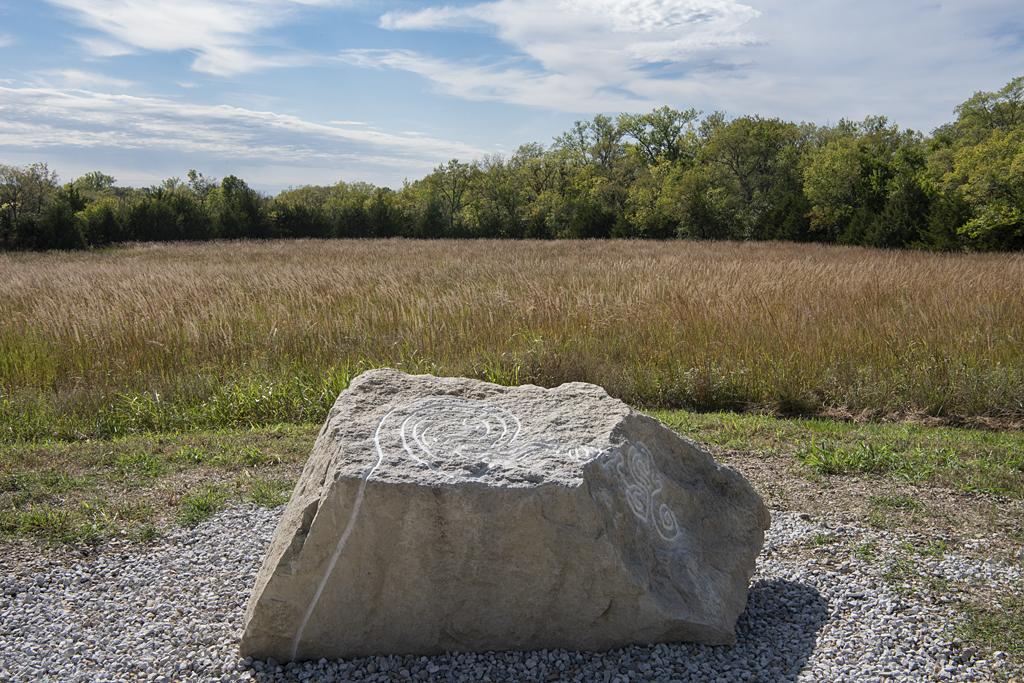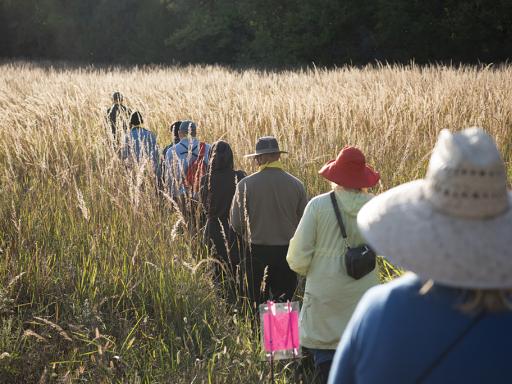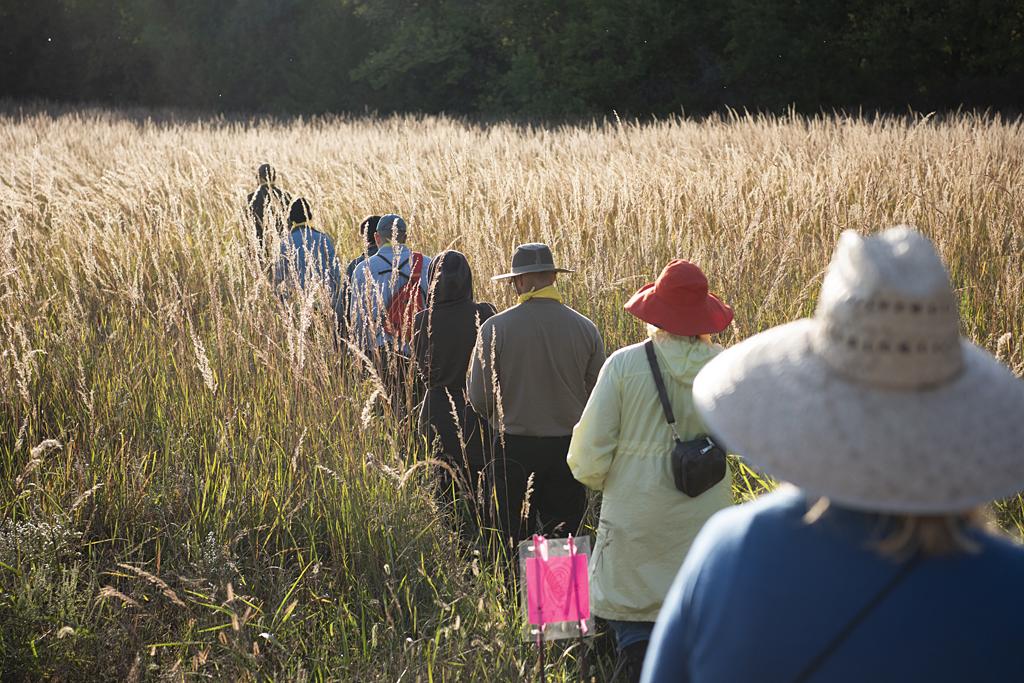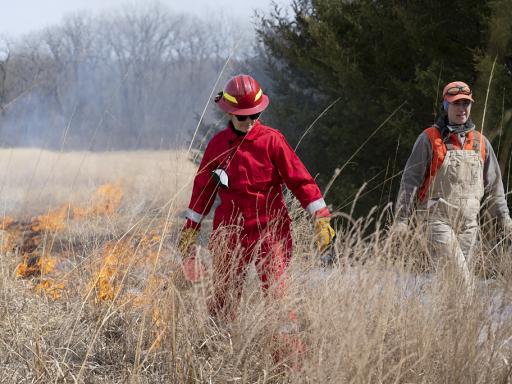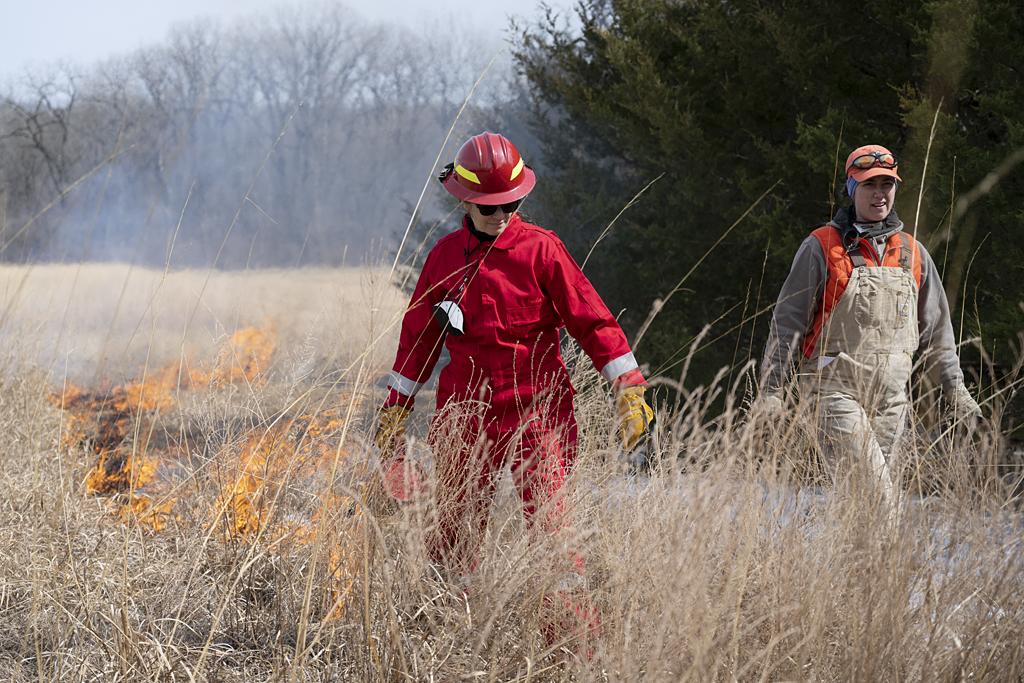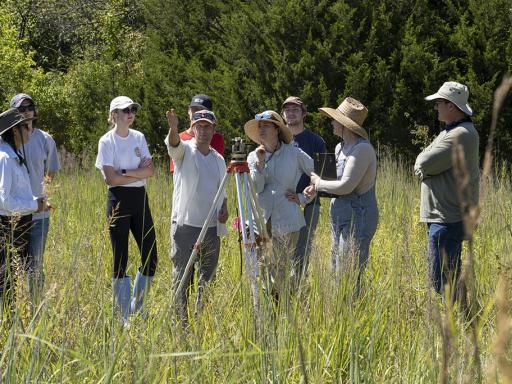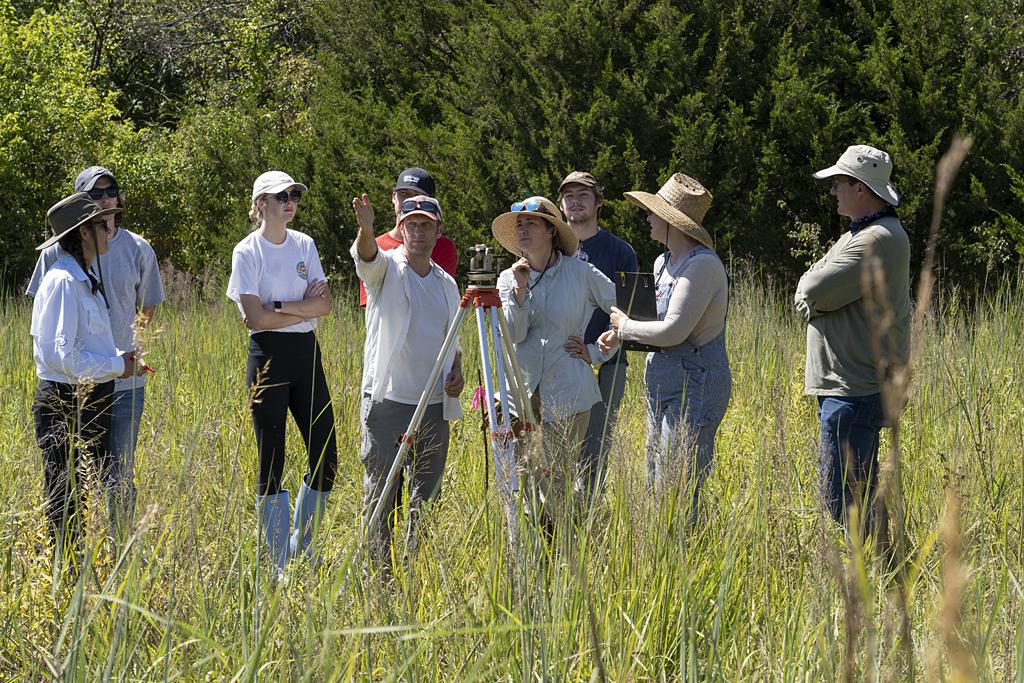here-ing is a walking labyrinth—created by Janine Antoni in partnership with the Spencer Museum, the Kansas Biological Survey and Center for Ecological Research, and the DesignBuild Studio in KU’s School of Architecture—in the shape of the anatomy of the human ear. At the heart of the project is an invitation for the public to return to their bodies through intimately relating to the land.
In March 2022, with guidance from KU Field Station staff, Antoni and community members assisted with a prescribed prairie burn to prepare the site for here-ing. The following fall, Antoni worked with students in KU Professor Keith Van de Riet’s design-build class to survey and mark a grid in the field. In March 2023, Melinda Adams, who belongs to the N’dee San Carlos Apache Tribe and is assistant professor in Indigenous environmental studies at KU, led a cultural burn of the here-ing field assisted by students and tribal members. The project team then gridded the next extension of the labyrinth’s path to include the shape of the middle and inner ear. For here-ing’s opening in the fall of 2023, Karl Ramberg carved a finger labyrinth that mirrors the shape of the walking labyrinth, giving participants an overview as well as including an experience for those who cannot access the path.
You can explore here-ing for free on any day between sunrise and sunset. It is located adjacent to the Roth Trailhead at the KU Field Station. Find here-ing on Google Maps.
The 2-mile roundtrip path takes about 1 hour to walk. Elevation change is minimal, but the path is not ADA accessible. We recommend wearing closed-toe shoes with long pants tucked into socks. Bug spray can help avoid ticks. Hats, sunscreen, and water are highly encouraged.
